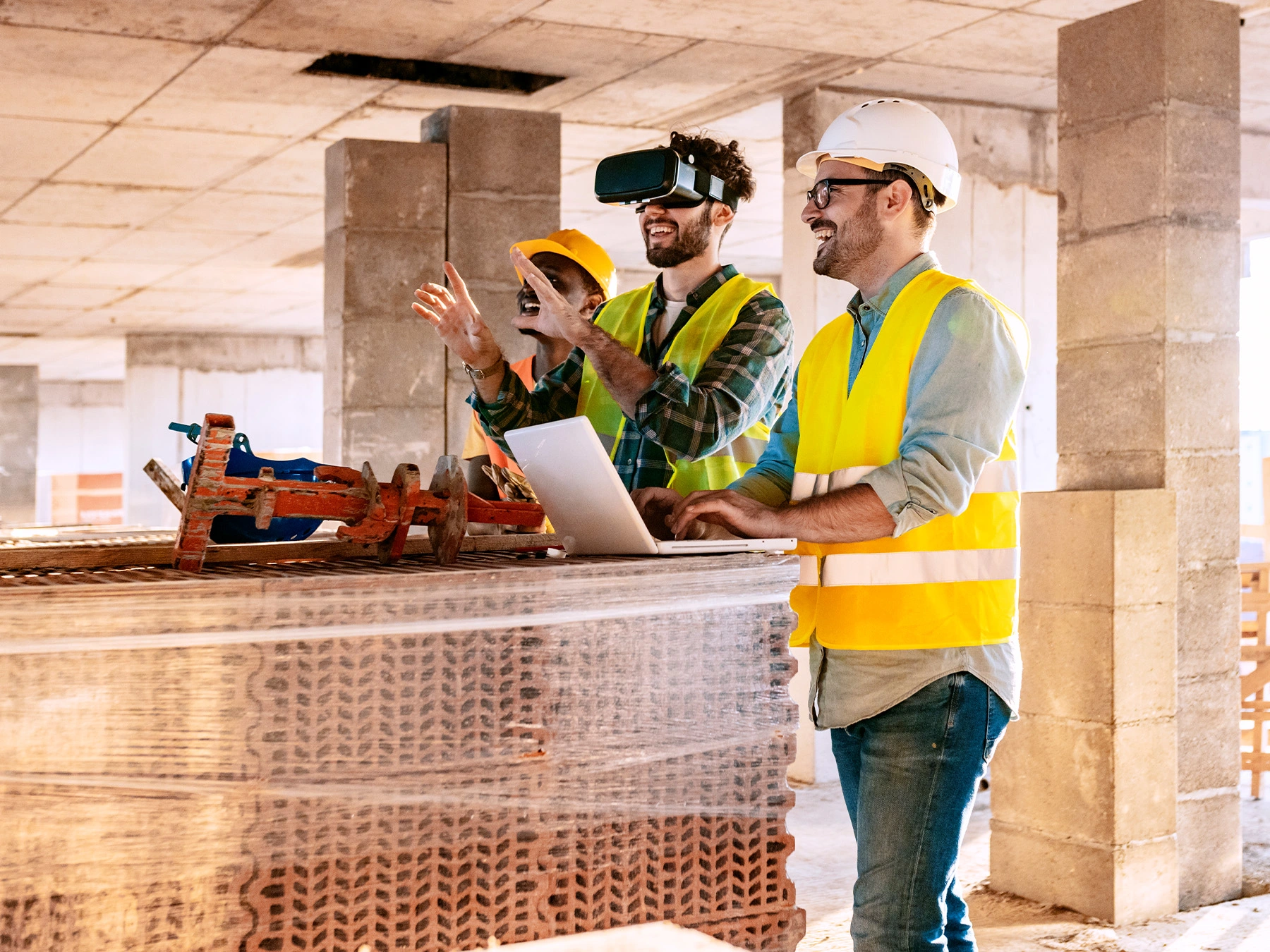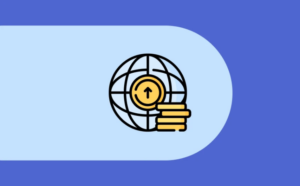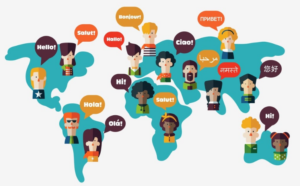In an industry as dynamic and demanding as construction, the need for efficiency, precision, and innovation has never been more crucial. Enter the world of artificial intelligence (AI), where cutting-edge tools are reshaping how construction professionals, project managers, and engineers approach their projects. This blog post will guide you through the burgeoning landscape of AI in construction and help you choose the right tools that can transform your work processes, ensuring both safety and profitability.
AI is no longer a futuristic concept; it’s a present-day powerhouse that’s revolutionizing various business sectors. In construction, AI tools are being harnessed to optimize everything from design and planning to on-site execution and safety management. But with so many options available, how do you choose the right AI tools that cater to your specific needs? This guide will walk you through key considerations and provide expert insights, practical tips, and real-world examples to help you make informed decisions.
Understanding the Role of AI in Construction
AI is changing the way construction projects are planned and executed. By leveraging advanced data analytics, machine learning, and predictive algorithms, AI tools can significantly enhance decision-making processes. These technologies allow construction professionals to predict potential problems, streamline workflows, and improve overall project outcomes.
AI in construction isn’t limited to a single aspect of the project lifecycle. From conceptual design stages to post-construction maintenance, AI tools can be integrated at every step. By analyzing vast amounts of data, these tools provide actionable insights that help in optimizing resource allocation, reducing costs, and improving safety standards.
One of the most significant impacts of AI in construction is its ability to mitigate risks. By predicting potential failures and providing real-time updates, AI tools help project managers and engineers make proactive decisions. This not only ensures the project’s success but also enhances the safety and well-being of workers on-site.

Identifying Your Needs and Objectives
Before selecting AI tools, it’s essential to identify your specific needs and objectives. Every construction project is unique, and understanding the particular challenges and goals of your project will help you choose the most suitable tools. Consider aspects such as project size, complexity, budget constraints, and the skills of your team.
Start by assessing the current pain points in your operation. Are there recurring issues with project timelines, budget overruns, or safety incidents? Identifying these problems will help you determine which AI tools can offer the most value. For instance, if safety is a primary concern, look for tools that specialize in real-time hazard detection and mitigation.
It’s also crucial to align your choice of AI tools with your long-term strategic goals. Consider how these technologies can enhance not just individual projects but also your overall business operations. By integrating AI tools that support your growth strategy, you can ensure sustainable success and competitiveness in the industry.
Exploring AI Applications in Design Planning
AI is transforming the design and planning phases of construction through generative design and automated workflows. These tools enable architects and engineers to explore a multitude of design options quickly and efficiently, optimizing for factors such as cost, sustainability, and aesthetics.
Generative design tools use AI algorithms to generate design alternatives based on predefined parameters. This approach allows teams to explore innovative solutions that might not be possible through traditional methods. The result is more efficient designs that meet the project’s requirements while minimizing resource consumption and environmental impact.
Automated planning tools streamline the scheduling and coordination of construction activities. By analyzing historical data and current project variables, these tools can create optimal schedules that minimize delays and maximize productivity. This level of precision enables project managers to allocate resources effectively and reduce the likelihood of costly setbacks.
Enhancing On-Site Execution with AI
On-site execution is a critical phase in construction that can benefit significantly from AI integration. AI tools offer real-time monitoring and predictive analytics capabilities that enhance project management and execution. These tools provide insights into on-site activities, helping teams identify inefficiencies and make data-driven decisions.
Real-time monitoring systems use AI to track the progress of construction activities, providing valuable insights into time, labor, and material usage. This information empowers project managers to make informed decisions and adjustments on-the-fly, ensuring projects stay on schedule and within budget.
Predictive analytics tools use machine learning algorithms to forecast potential challenges and risks on-site. By analyzing historical data and current conditions, these tools help construction professionals anticipate issues such as equipment failures, material shortages, or safety hazards. This proactive approach minimizes disruptions and enhances overall project efficiency.
Improving Safety Standards with AI
Safety is paramount in construction, and AI tools are making significant advancements in this area. By utilizing computer vision, sensors, and machine learning, AI technologies enhance safety protocols and reduce the risk of accidents and injuries on-site.
Computer vision systems use AI to analyze video and image data from construction sites, identifying potential hazards and compliance violations. These tools can detect unsafe practices, such as workers not wearing protective gear or equipment operating in hazardous conditions. By providing real-time alerts, AI systems enable prompt corrective actions, preventing accidents before they occur.
Sensor-based AI tools monitor environmental conditions, such as temperature, humidity, and noise levels, to ensure compliance with safety standards. These tools provide continuous data feeds, allowing construction teams to maintain safe working conditions and reduce the risk of occupational hazards.
Optimizing Resource Allocation and Efficiency
Efficient resource allocation is crucial in construction to minimize waste and maximize productivity. AI tools provide valuable insights into resource management by analyzing data on labor, materials, and equipment usage, helping teams make informed decisions.
Resource optimization tools use AI algorithms to analyze project requirements and allocate resources effectively. These tools consider factors such as workforce availability, material supply, and equipment utilization to create optimal resource plans. By minimizing idle time and maximizing resource efficiency, these tools contribute to cost savings and improved project timelines.
AI-powered inventory management systems track material usage and stock levels in real-time, ensuring timely replenishment and reducing wastage. By providing accurate demand forecasts and supply chain insights, these tools help construction professionals avoid delays caused by material shortages.
Streamlining Communication and Collaboration
Effective communication and collaboration are essential for successful construction projects. AI tools facilitate seamless information sharing and collaboration among project teams, subcontractors, and stakeholders, enhancing coordination and efficiency.
AI-powered collaboration platforms provide centralized access to project data, documents, and communications, ensuring all team members have the information they need when they need it. These platforms enable real-time collaboration, allowing teams to share updates, resolve issues, and make decisions efficiently.
Natural language processing (NLP) tools enhance communication by automating document generation and translation. These tools convert complex technical documents into easy-to-understand language, ensuring clear communication between diverse teams and stakeholders. NLP tools also automate language translation, facilitating communication in multilingual projects.
Assessing Scalability and Integration
When choosing AI tools for construction, it’s essential to consider scalability and integration capabilities. Select tools that can grow with your organization and integrate seamlessly with your existing technology infrastructure.
Scalable AI tools are designed to accommodate increasing project complexity and size. These tools can handle larger datasets, more users, and additional functionalities as your organization expands. Choosing scalable tools ensures that your AI solutions remain relevant and effective in the long term.
Integration capabilities are crucial for ensuring smooth data flow and interoperability between different software systems. Look for AI tools that can integrate with your existing project management, design, and financial systems, allowing for seamless data exchange and comprehensive insights.
Evaluating Cost and Return on Investment
Cost considerations play a significant role in the decision-making process for AI tool adoption. It’s essential to evaluate the cost of AI tools against the potential return on investment (ROI) they offer.
Consider both the initial investment and ongoing operational costs of AI tools. While some tools may require significant upfront costs, they may lead to substantial long-term savings through increased efficiency and productivity. Analyze the projected ROI by considering factors such as reduced labor costs, minimized delays, and improved project outcomes.
Furthermore, explore pricing models offered by AI vendors, such as subscription-based or pay-per-use options. Choose a model that aligns with your budget and usage patterns, ensuring cost-effective deployment of AI tools.
Researching Vendor Reputation and Support
Selecting the right AI vendor is critical to the success of your AI initiatives. Conduct thorough research on potential vendors’ reputation, experience, and support services to ensure a reliable partnership.
Look for vendors with a proven track record of delivering AI solutions to the construction industry. Consider their expertise, client testimonials, and case studies to gauge their capabilities and credibility. Additionally, assess their commitment to innovation and continuous improvement, as this indicates their ability to adapt to evolving industry needs.
Evaluate the level of customer support and training provided by AI vendors. Ensure that vendors offer comprehensive support services, including onboarding, training, and troubleshooting, to facilitate successful implementation and adoption of their AI tools.
Staying Informed About Industry Trends
The construction industry is continually evolving, and staying informed about the latest trends and innovations is essential for making informed AI decisions. Keep abreast of industry developments, emerging technologies, and best practices to stay ahead of the curve.
Participate in industry events, conferences, and webinars to gain insights from industry experts and thought leaders. Engage with construction associations and networks to exchange knowledge and experiences with peers who have integrated AI tools into their operations.
Subscribe to industry publications, blogs, and newsletters to receive regular updates on AI advancements and their impact on the construction sector. By staying informed, you can identify new opportunities and adopt AI technologies that align with industry trends and demands.
Taking the Next Steps Toward AI Integration
In conclusion, AI tools hold immense potential for transforming the construction industry, offering benefits such as enhanced efficiency, improved safety, and optimized resource management. By following the guidelines outlined in this blog post, construction professionals, project managers, and engineers can make informed decisions when choosing the right AI tools for their projects.
Remember to assess your specific needs, explore different AI applications, and prioritize scalability and integration. Evaluate costs, ROI, and vendor reputation to ensure a successful AI implementation. Finally, stay informed about industry trends and continue exploring AI advancements to drive ongoing innovation and success in your construction endeavors.
FAQs
What are some common applications of AI in construction?
AI is commonly used in construction for tasks such as project management, resource optimization, predictive maintenance, safety monitoring, and design automation. These applications help improve efficiency, reduce costs, and enhance overall project outcomes.
How can AI improve safety on construction sites?
AI enhances safety by analyzing data from sensors and cameras to identify potential hazards, monitoring worker activities to ensure safe practices, and predicting equipment failures before they occur, thereby preventing accidents.
Is it costly to implement AI tools in construction?
A: While there is an initial investment required for implementing AI tools, they can lead to significant cost savings over time through increased efficiency, reduced delays, and optimized resource management. It’s important to assess potential ROI to justify the costs.
Can AI tools integrate with existing construction software systems?
Yes, many AI tools are designed to integrate seamlessly with existing construction software systems to ensure smooth data flow and interoperability, enhancing efficiency and decision-making.
How does AI facilitate better communication in construction projects?
AI tools, particularly those with natural language processing capabilities, automate the translation of documents and complex data into user-friendly language, making communication between teams and stakeholders more effective and clear.
What should be considered when choosing an AI vendor?
When choosing an AI vendor, consider their reputation, experience in the construction industry, level of customer support, pricing models, and the ability of their tools to scale and integrate with existing systems.




